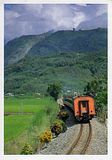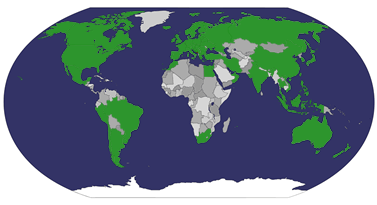
Verona Arena, Verona, Italy (UNESCO WHS)
Verona is a city in Veneto, northern Italy, one of the seven provincial capitals in the region. It is one of the main tourist destinations in north-eastern Italy, thanks to its artistic heritage, several annual fairs, shows and operas, such as the lyrical season in the Arena, the ancient amphitheatre built by the Romans.
Verona owes its historical and economical importance to its geographical location, in a loop of the Adige River near Lake Garda. Because of this position, the areas saw regular floodings until 1956, when the Mori-Torbole tunnel was constructed, providing 500 cubic meters of discharge from the Adige river to Lake Garda when there was danger of flooding. The tunnel reduced the risk of flooding from once every seventy years to once every two centuries.
The Verona Arena (Arena di Verona) is a Roman amphitheatre in Verona, Italy, which is internationally famous for the large-scale opera performances given there. It is one of the best preserved ancient structures of its kind.
The building itself was built in AD 30 on a site which was then beyond the city walls. The ludii (shows and games) staged there were so famous that spectators came from many other places, often far away, to witness them. The amphitheatre could host more than 30,000 spectators in ancient times.
The round façade of the building was originally composed of white and pink limestone from Valpolicella; but after a major earthquake in 1117, which almost completely destroyed the structure's outer ring, except for the so-called "ala", the stone was quarried for re-use in other buildings.
The first interventions to recover the arena's function as a theatre began during the Renaissance. Some operatic performances were later mounted in the building during the 1850s, owing to its outstanding acoustics.
In 1913, operatic performances in the area commenced in earnest due to the zeal and initiative of the great Italian opera tenor Giovanni Zenatello and the impresario Ottone Rovato. The first 20th-century operatic production at the arena, a staging of Giuseppe Verdi's Aida, took place on 10 August of that year, to mark the birth af Verdi a 100 year before in 1813. Musical luminaries such as Puccini and Mascagni were in attendance. Since then, summer seasons of opera have been mounted continually at the arena, except in 1915-18 and 1940-45, when Europe was convulsed in war.
Nowadays, four productions are mounted each year between June and August. During the winter months, the local opera and ballet companies perform at the L'Accademia Filarmonica.
维罗纳(意大利语:Verona)是位于意大利北部威尼托大区阿迪杰河畔的一座历史悠久的城市,2000年入选联合国教科文组织的世界遗产。
莎士比亞的名作《羅密歐與茱麗葉》以此城為背景。
维罗纳最初由古代意大利的埃乌加内人建造,公元前550年被古高卢人占领,公元前约300年波河流域成为罗马人的领土,公元前89年维罗纳成为罗马帝国的殖民地,维罗纳城内现存的圆形露天剧场(竞技场)建造于此后的一个世纪。
维罗纳因为处在多条贸易道路的交界,成为欧洲一座重要的城市。东哥特人从489年开始统治意大利,维罗纳成为东哥德王国狄奥多里克大帝的住所。569年伦巴底人阿尔博因取而代之,维罗纳成为伦巴第的第二大城市。774年伦巴底人在维罗纳做出对法兰克王国查理大帝的最后一次抵抗失败,维罗纳成为意大利国王的住所。952年德意志国王奥托一世入侵意大利征服伦巴第,自称意大利国王,维罗纳归属于巴伐利亚公爵家族,976年起隶属于克恩顿。12世纪开始维罗纳才获得城市的自治权,1164年创建并加入伦巴第城市联盟,中世纪后期由斯卡拉家族统治。
1509年至1517年维罗纳由神圣罗马帝国的马克西米连一世统治。维罗纳在1797年被拿破仑占领,他结束了威尼斯共和国的统治,在与意大利一起击败第一次反法同盟后,与奥地利签署合约,将维罗纳划为奥地利城市。意大利在1866年的普奥战争中与普鲁士结盟并最终战胜奥地利,维罗纳回归意大利王国。
维罗纳最雄伟的建筑是竞技场,它同时也是罗马式的圆形露天剧场,它是世界上现存的第三大圆形竞技场,每年夏天都举行歌剧演出,吸引了众多的歌剧迷。
References sources : Wikipedia





























 Postcards received from
Postcards received from 








































































0 comments:
Post a Comment